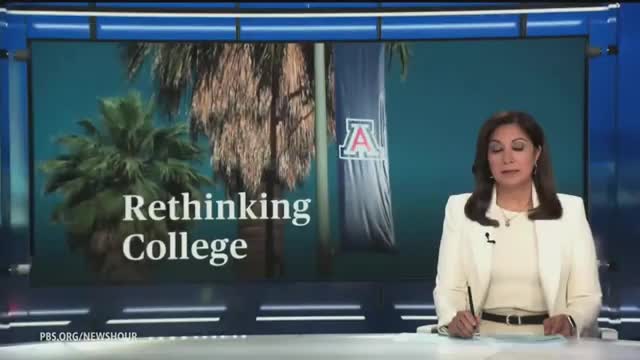Universities under fire for failing Native American students

This article was created by AI summarizing key points discussed. AI makes mistakes, so for full details and context, please refer to the video of the full meeting. Please report any errors so we can fix them. Report an error »

A recent investigation has brought renewed attention to the responsibilities of land grant universities towards Native American students, highlighting a troubling legacy of land expropriation. The report reveals that many institutions have profited from land taken from Native tribes, with significant revenues generated from leasing these lands for industries such as oil and gas.
The University of Arizona, a prominent land grant institution, has faced scrutiny as students like Alina Sierra share their struggles with financial support. Despite receiving a Pell Grant and an Arizona Native Scholars grant, Sierra found herself overwhelmed by additional costs for housing, transportation, and meal plans, ultimately leading to her dropping out. This reflects a broader issue, as many Native students report running out of funds while pursuing their education.
Felicia Tagaban Gaskin, a graduate student at the University of Arizona, criticized the university's efforts as largely performative, noting that while there are initiatives like land acknowledgments and events, substantial support for Native students remains lacking. The investigation by High Country News previously revealed that the land grant university system, established under the Morrill Act, was built on the expropriation of over 10 million acres from nearly 250 tribes.
Amanda Tachine, an educator at Arizona State University, pointed out a significant decline in Native student enrollment, which has dropped by 40% since the Great Recession. This trend raises concerns about the support systems in place for Native students at universities, where they often feel disconnected and unsupported.
Washington State University is also working to improve conditions for Native students, emphasizing the need for a supportive environment that includes Native faculty and staff, as well as financial assistance. Vice Provost Zoe High Eagle Strong highlighted the importance of addressing even minor financial barriers that can lead to student dropouts.
Calls for reparations have intensified, particularly as universities continue to profit from land leases. A recent analysis revealed that between 2018 and 2022, land grants generated nearly $6.7 billion, with the University of Arizona alone receiving $7.7 million from leases in 2022. As discussions around reparations and support for Native students gain momentum, the need for meaningful action from these institutions has never been more urgent.
The University of Arizona, a prominent land grant institution, has faced scrutiny as students like Alina Sierra share their struggles with financial support. Despite receiving a Pell Grant and an Arizona Native Scholars grant, Sierra found herself overwhelmed by additional costs for housing, transportation, and meal plans, ultimately leading to her dropping out. This reflects a broader issue, as many Native students report running out of funds while pursuing their education.
Felicia Tagaban Gaskin, a graduate student at the University of Arizona, criticized the university's efforts as largely performative, noting that while there are initiatives like land acknowledgments and events, substantial support for Native students remains lacking. The investigation by High Country News previously revealed that the land grant university system, established under the Morrill Act, was built on the expropriation of over 10 million acres from nearly 250 tribes.
Amanda Tachine, an educator at Arizona State University, pointed out a significant decline in Native student enrollment, which has dropped by 40% since the Great Recession. This trend raises concerns about the support systems in place for Native students at universities, where they often feel disconnected and unsupported.
Washington State University is also working to improve conditions for Native students, emphasizing the need for a supportive environment that includes Native faculty and staff, as well as financial assistance. Vice Provost Zoe High Eagle Strong highlighted the importance of addressing even minor financial barriers that can lead to student dropouts.
Calls for reparations have intensified, particularly as universities continue to profit from land leases. A recent analysis revealed that between 2018 and 2022, land grants generated nearly $6.7 billion, with the University of Arizona alone receiving $7.7 million from leases in 2022. As discussions around reparations and support for Native students gain momentum, the need for meaningful action from these institutions has never been more urgent.
View full meeting
This article is based on a recent meeting—watch the full video and explore the complete transcript for deeper insights into the discussion.
View full meeting